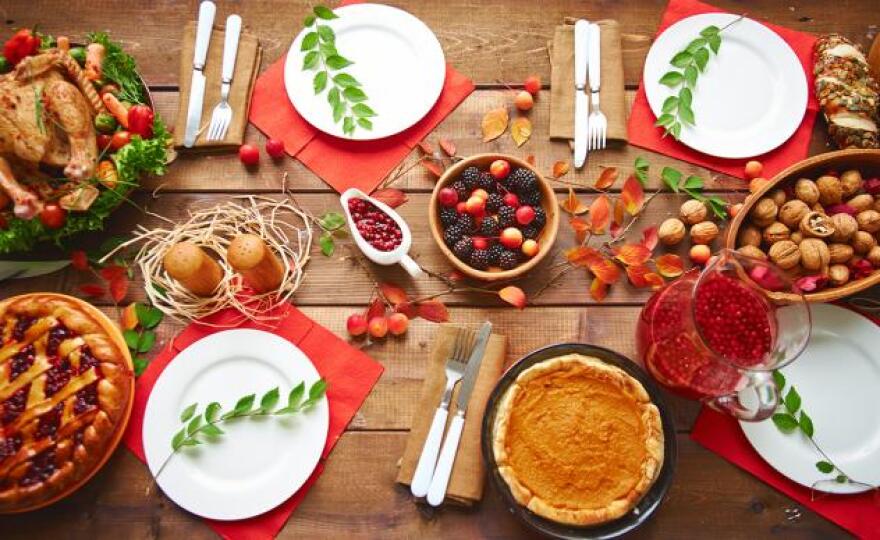The holidays roll around every year, and fortunately we have a set menu for some of the important dinners. This is helpful to those of us who generally fret about meal planning until the very last minute. Of course, on Thanksgiving, turkey’s usually the star of the show, but we can’t forget all the other dishes on the dinner table. Since Thanksgiving is the American Feast, we tend to believe that everything we eat is American. And certainly many of the foods we have at our annual feast are American. Mostly from Central and South America, but definitely America.
Like potatoes and sweet potatoes. These aren’t related to each other, by the way. Both of them originated in Latin America, and they both grow underground, but those’re the only similarities. And the fact that you’re bound to find them both on holiday tables. Sweet corn, just like the grain in corn bread, is from Central America. The winter squashes, for instance butternut and pumpkins, had their start in this hemisphere as well. String beans are American natives, too. Even though there’s a bit of controversy with cranberries, I think we can safely say that they evolved here.
There you have the key players in any Thanksgiving dinner, but other foods appear on that table as a rule.
In fact, like America as a whole, our holiday tables have representatives from the entire globe.
Think about onions and garlic – from Central Asia originally, but some experts are now considering the possibility that onions evolved separately in many different parts of the world. Given that they’re so widely used, I wouldn’t be surprised. After all, roses seem to have evolved on many continents, why not onions?
How bland and miserable would turkey stuffing would be without onions? Perish the thought. I just learned that chives, which I often use in place of onions, did evolve in North America.
Parsley – it’s Mediterranean. Celery and many of the spices we insist on came from all over the map.
Dill’s an herb that seems to be from everywhere, and if you have pickles, remember that cucumbers evolved in India about 3,000 years ago, but they spread all over the planet.
Native Americans were growing them in Canada in the 16 th century. I have no idea how that happened. You probably won’t be surprised to learn that olives have been around for a long time; they’ve been in cultivation for at least 6,000 years, but not in America.
With the exception of tomatoes and peppers, most of our salads are introductions. Lettuce comes from Central Asia, spinach is from Persia, and cabbage is from somewhere in Europe.
When we come to dessert – to call something as “American as apple pie” is really so far from reality. Apples evolved in Central Asia. Even the crust is from the Middle East. Just under 10,000 years ago, people in the Fertile Crescent began cultivating wheat. Cinnamon’s been around so long that nobody’s certain where it evolved. And sugar? Sugar comes from far away – sugar cane from South Asia and Melanesia, and sugar beets from Silesia, which is mostly in Poland but has a section in the Czech Republic.
You could, of course replace sugar with honey, which appears anywhere there’re bees. The Gaelic word for sweet is the same as the word for honey. Here in the desert southwest, we can use agave syrup. If you haven’t tried it, it’s similar to maple syrup. And vanilla is American – it evolved in Mexico.
With some extra work, it is possible to have Thanksgiving dinner using only foods from the western hemisphere, but why?
I think Thanksgiving is the true American feast after all. Some foods did originate in this hemisphere, but so many of thing things we enjoy over the holidays and throughout the year started out as immigrants. That’s just like the majority of us, the people in the United States.
For KNPR’s Desert Bloom, this is Dr. Angela O’Callaghan of the University of Nevada Cooperative Extension, wishing you happy and safe holidays.








